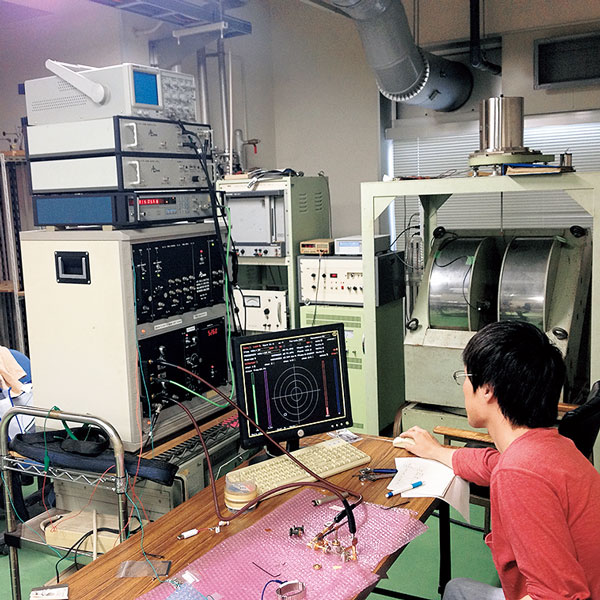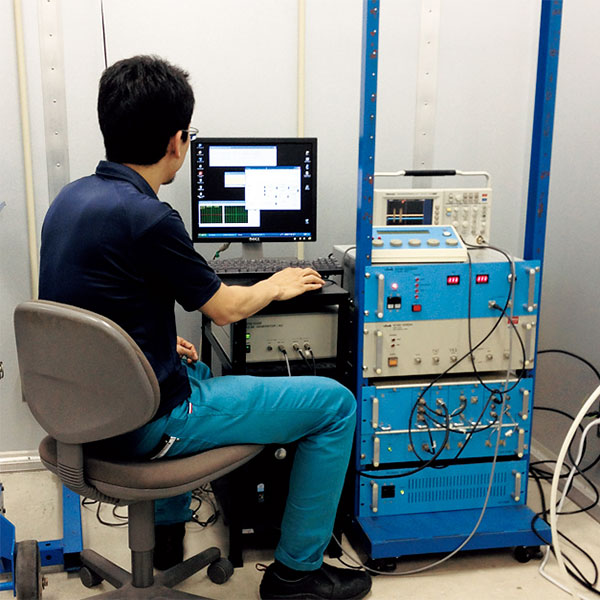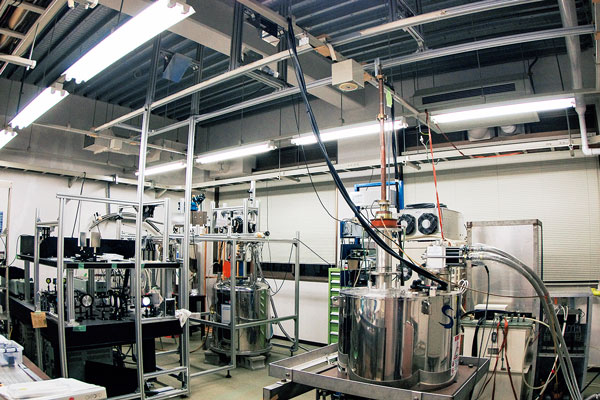Materials science in the high-power far-infrared region
The applied research on the gyrotron is one of the most important research fields at the FIR UF. There, for the first time in the world, ESR measurements were successfully performed using a gyrotron. This new technology has been applied in solid-state physics as well as studies of advanced gyrotrons. Studies of gyrotron applications have led to applied research in the various aforementioned fields. We also developed an original materials processing system with the world’s highest frequency (300 GHz) and advanced the study of materials processing with high-frequency electromagnetic waves. We continue to improve these new technologies of the high-power far-infrared region.
Material processing with gyrotrons
Heating by an electromagnetic wave at 2.45 GHz is the technique generally employed by microwave ovens. At the FIR UF, experiments on the heating of materials can be performed with electromagnetic waves at frequencies 100 times that of the microwave oven, owing to the high-frequency and high-power capabilities of gyrotrons. On heating by an electromagnetic wave, the energy is provided directly to the molecules, yielding a material unlike that produced by conventional heating. Thus, the characteristics of materials can be improved, with added functions, by tuning the frequency and output power of the electromagnetic waves.
Equipments for material processing with gyrotron 1

Equipments for material processing with gyrotron 2

Features of material processing by electromagnetic waves
- Ceramics (materials for sintering) themselves are heated.
- We can realize a reaction process without a thermal equilibrium, using materials with different electromagnetic wave absorption characteristics (differential heating).
- Innovative material development using special effects (“non-thermal effect,” electromagnetic wave effects).

the high-purity alumina ceramics was revealed by 28- and 300-GHz
electromagnetic-wave sintering experiments.
Development and application of the high-frequency magnetic resonance technique
It is interesting to study the magnetic properties of a material under the extreme conditions of high magnetic fields and very low temperatures because the basic and fundamental physics in condensed matters are often revealed. We can investigate these properties on the microscopic scale, inside the material, using the magnetic resonance technique over a wide frequency range.
mm-wave vector network
analyzer( MVNA)

FFT-NMR spectrometer

Magnetic field: 18-T static field, 40-T pulsed field
Temperature: 300̃1.5 K (liquid He)
̃0.1 K ( 3He/4He dilution refrigerator)
Frequency:
Electron spin resonance (ESR): up to 800 GHz (MVNA)
Nuclear magnetic resonance (NMR): 5‒400 MHz (300-W pulsed RF)
Example of ESR/NMR double resonance

Development of high-frequency electron spin echo measurement system
The electron exhibits both electric and magnetic properties. The magnetic properties have mainly been used in magnets. With the development of quantum mechanics, the realization of spin electronics and quantum computers using a quantum magnetic property (spin) of the electron is attracting considerable attention. By measuring with irradiation pulses of a few nanoseconds (approximately a billionth of a second) with a high frequency and high-power electromagnetic waves from a gyrotron, we can examine the dynamic characteristics of the electron spin and control it to realize these new quantum applications.


maintaining the coherency using a light-driven semiconductor
switching device
